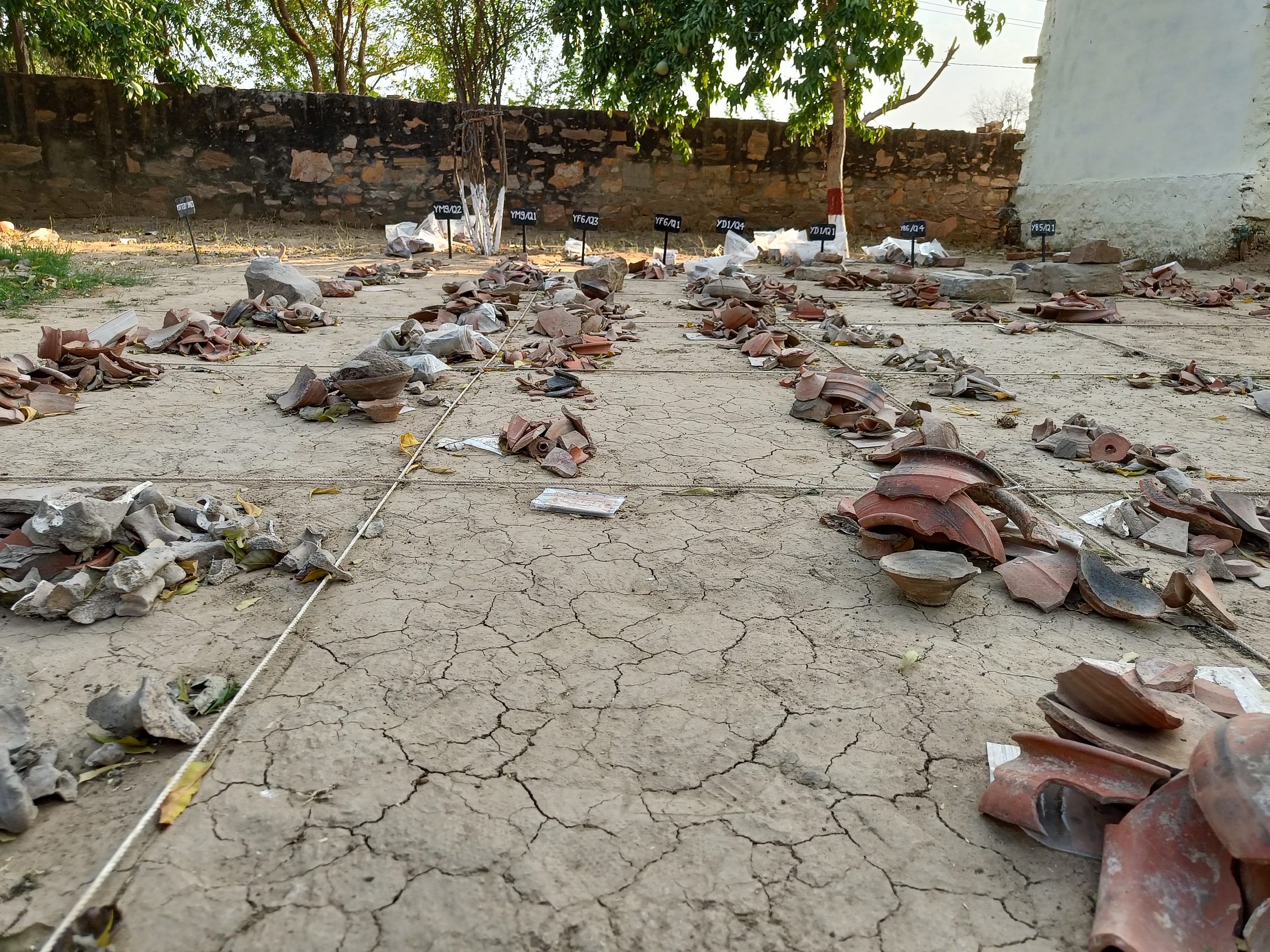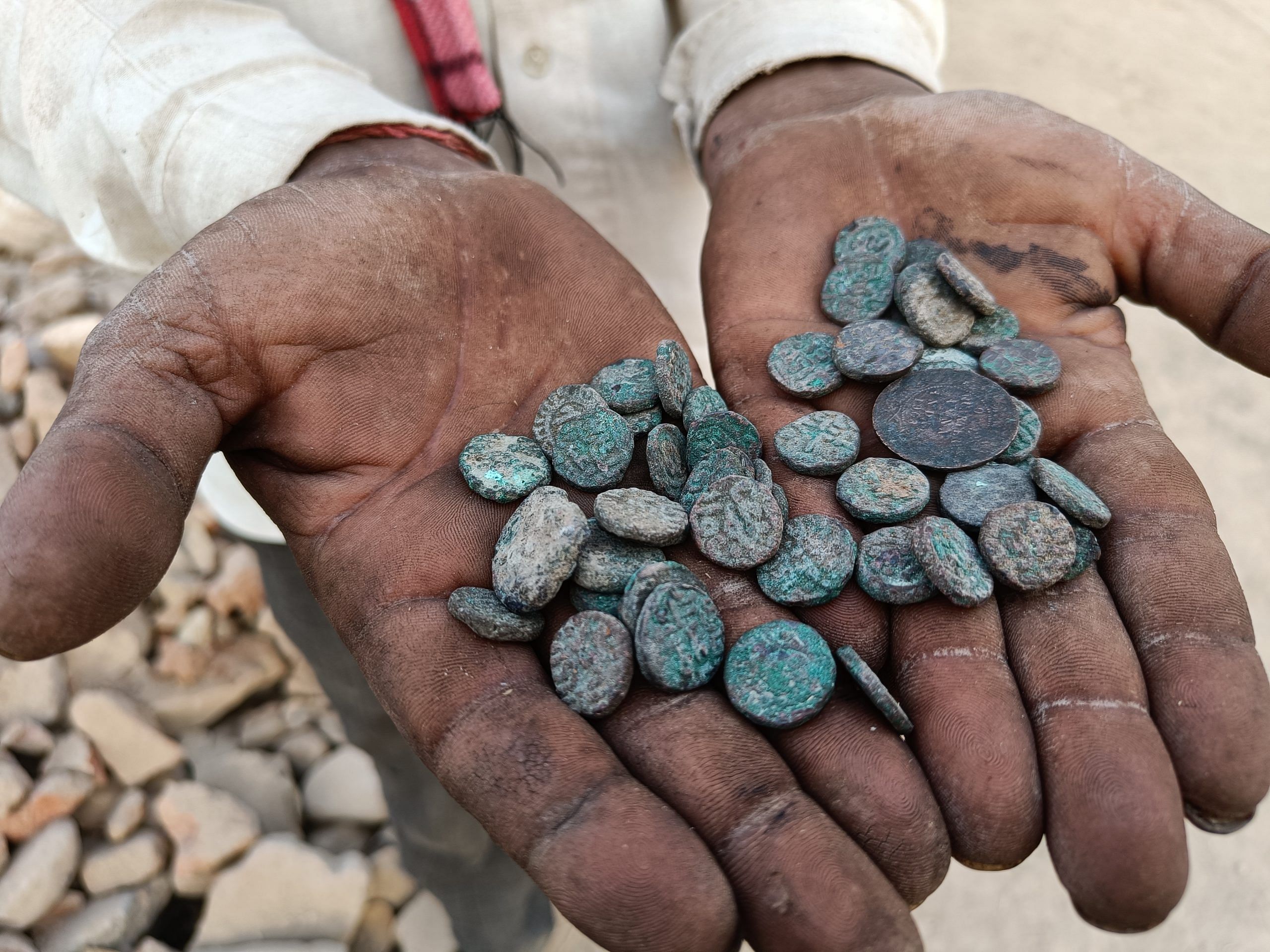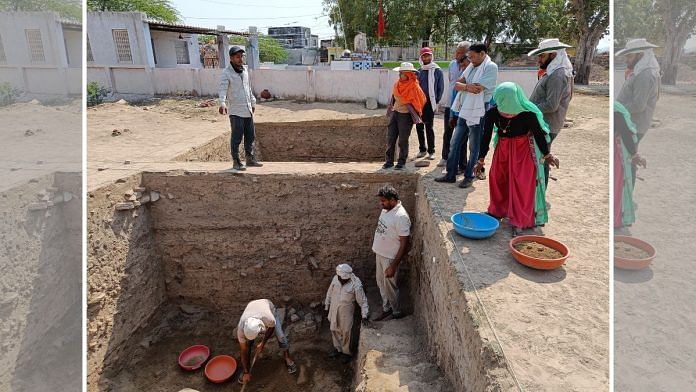Benwa/Sikar: There’s a flurry of digging activity in Benwa village in Sikar, but the excavators are not looking for iron or copper ore in Rajasthan’s mining belt. An Archaeological Survey of India team is delving into layers of rock and soil for shards of pottery and remnants of a ‘copper culture’ that could be as old as the early Harappan civilisation (3300 BCE to 2600 BCE), if not older. It’s the first time that ASI has authorised excavations here.
The village rests on a mound that is surrounded by the copper-rich Aravalli range. In this bleak landscape, vegetation withers and shrivels under the sun. Skeletal remains of animal carcasses gleam under bushes. But Benwa has come under the ASI’s gaze as a site of potential archaeological importance.
“The goal is to find out the oldest culture here, to understand the chronology of all the cultures that lived here,” says archaeologist Vinay Gupta who is leading the Sikar excavation.
The site could yield a treasure trove of ancient artefacts because of its rich copper mines
“If any civilisation is found from here, it will open a new chapter of history,” says archaeologist Rajeev Ranjan, head of History department, Seth Nand Kishor Patwari Government College, Neem Ka Thana, Rajasthan.
The village’s proximity to Ganeshwar is also a factor for the dig. Barely 15km away, archaeologists had excavated arrowheads, spearheads, chisels, and ornaments like hairpins and bangles that have now been linked to the same period as the Harappan civilisation. This was unearthed over a series of excavations—the last being in 2013.
The artefacts are part of the Ganeshwar Jodhpura Culture, where copper was traded with other contemporary civilisations such as Harappa and the Ahar-Banas Culture (3000 – 1500 BCE).
“This area has been a copper smelting belt. There is a lot of copper and iron in the stone here. The Khetri copper complex is nearby, which is famous all over the world for copper. That’s why this place was possibly supplying to the subcontinent even in ancient times,” says Gupta.
Also Read: Bathinda Fort saw 1,600 years of Sultanate, Sikh history. ASI struggling to hold it together
Deep dive
The team under Gupta—five trainees and three ASI staffers—are camping on a plot right in front of Benwa’s government-run school. Every morning, armed with the tools of their trade, they make their way up the rough and rocky path to the excavation site.
Since the start of the dig on 18 January, archaeologists have excavated a sling ball, a broken spear, pottery shards, knobs from a vessel, bangles, remnants of a furnace with charcoal and more. Ruins of temples and a piece of terracotta that dates back to the Kushan empire (30-375 CE) have also been found. But none of the items excavated are similar to what the Ganeshwar excavations had yielded. Gupta has not yet found what he’s looking for.

“We want to study the culture here and how the pottery and deposits changed. We want to reach the lowest part of this area,” says Gupta.
The mound that the team is excavating is a rare feature in the topography of the area, it’s the only one that has not been encroached on. It was also mentioned in an earlier researcher’s account as having archaeological importance, which is how Benwa caught the ASI’s eye. Work is going on simultaneously in nine trenches, each 10 metres long and 10 metres wide. It’s a slow and painstaking process.
Work on one of the trenches stopped because the team discovered structures on the upper surface itself from the Sultanate Era (1206 CE to 1526 CE).
Tarun Puri, who is part of Gupta’s team, points to another trench on the slope of the mound and says, “We have reached the Mauryan period (321 BCE –185 BCE).”
It’s still not deep enough for Gupta.
The team is racing against time to uncover as much as they can before the onset of a relentless Rajasthan summer in May. A hot March is already posing a challenge. Gupta has asked his team to dig a trench around some trees nearby. “The shade of the trees will be available as it becomes hotter,” he says.
Every evening, they gather to discuss the day’s excavation. “Different people are handling different trenches. We discuss the things we found during the day, and everyone shares information on how their trench is behaving,” says Lolimb Raj Mishra, who was part of the Purana Qila excavation in 2017.
The major aim of the excavation in Sikar is to find the regional settlement, regional identities and variations in pottery.
Also Read: Does ASI protected monuments list need pruning? Historians debate what’s nationally important
Gaps in chronology
The site of the dig is in the proximity of multiple other cultures in Rajasthan.
The Ganeshwar Jodhpura Culture in northeast Rajasthan is believed to have been the largest copper-producing community in South Asia around 3000 BCE. The entire complex lies east of the Harappan civilisation while the Ahar-Banas culture is to its south and southwest.
The lack of “absolute dates” from the Ganeshwar site is a drawback other historians have also highlighted.
“The only date we have is that they go back to 2800 BCE, which is contemporary of Early Harappan civilisation. But we don’t have any more information like date range, chronology of the culture,” says Gupta.
Over multiple excavations, the upper levels at Jodhpura have been dated to 2900–2500 BCE, and it’s on the basis of this that Ganeshwar has also been placed in the bracket of 2500 to 2000 BCE, according to a 2021 paper published in the peer-reviewed journal, Ancient Asia, Society of South Asian Archaeology (SOSAA).
“This area may have been associated with trade in the olden times, although now many villages have settled around here, due to which a large part of the site has been destroyed,” says Ranjan.
The real treasure
Before Gupta and his team descended on this tiny village, it was a hobby for its 250 villagers to scrounge around for old coins.

Jagdish Prasad Gurjar, whose house is a short distance from the excavation site, proudly displays a few old coins, which according to the archaeologists date back to the mediaeval period during the rule of Delhi Sultan Ghiyas ud din Balban.
“One day I found these coins under the ground near a neem tree. People here have been getting such coins and old things from time to time,” says Gurjar.
Gupta also agrees this place was possibly of great importance during the Balban period. “There must have been a takshal (mint) here in those days,” he says. “This place must have been very prosperous at the time.”
He’s had to quell rumours among villagers that his team is digging for gold and silver. For Gupta, the real treasure would be finding remnants of a regional culture somewhat contemporary to the pre-Harappan civilisation. So far, there is no solid evidence of this.
“But digging never goes to waste,” he says.
(Edited by Theres Sudeep)



